Case History
A 53-year-old female presents with tonsil mass. What is the next step?
- Sign out; clinical staging evaluation needed to further characterize.
- Depends on the clinical history.
- Perform additional IHC/ISH.
- Perform additional IHC/ISH and molecular studies.
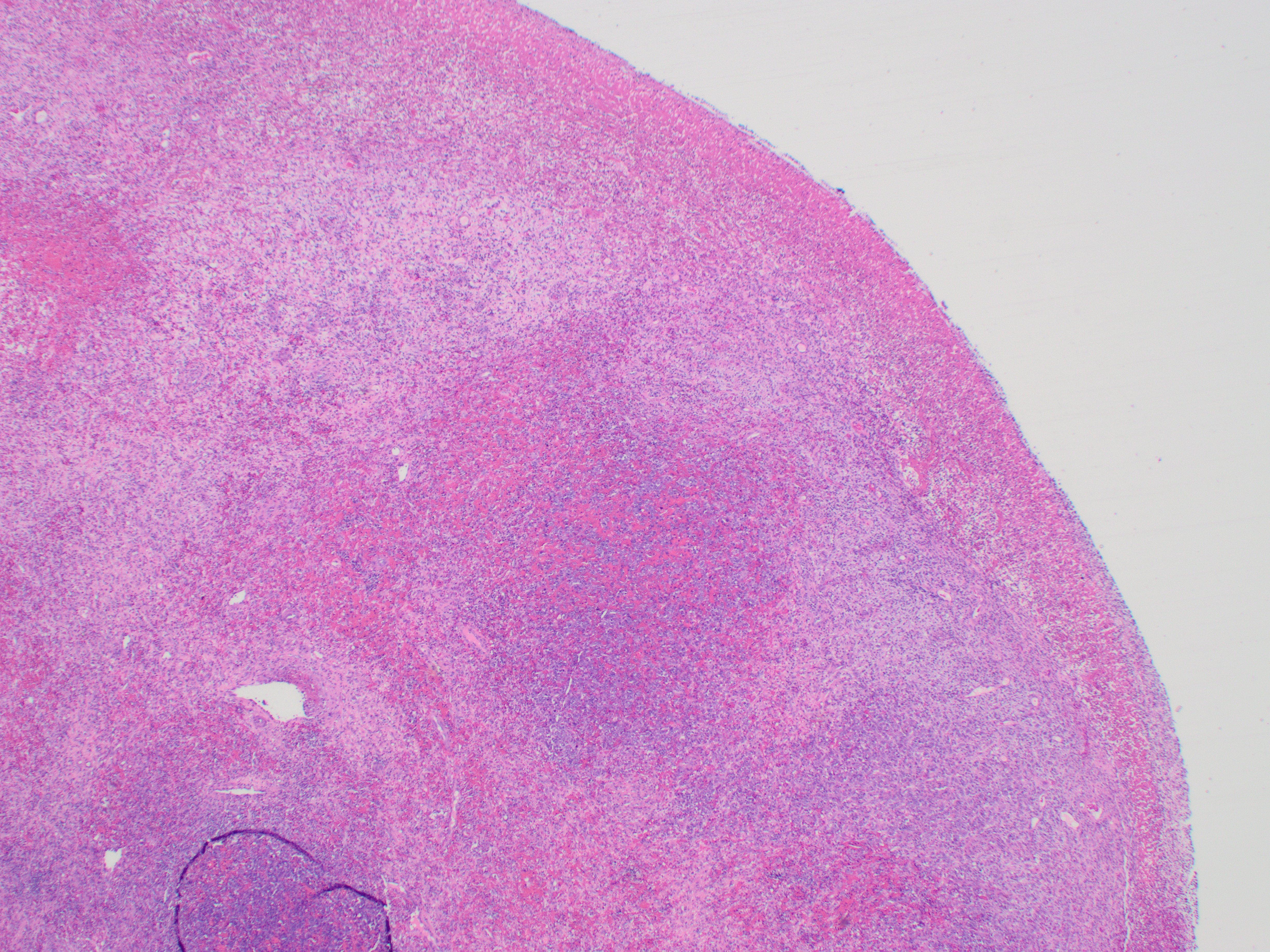
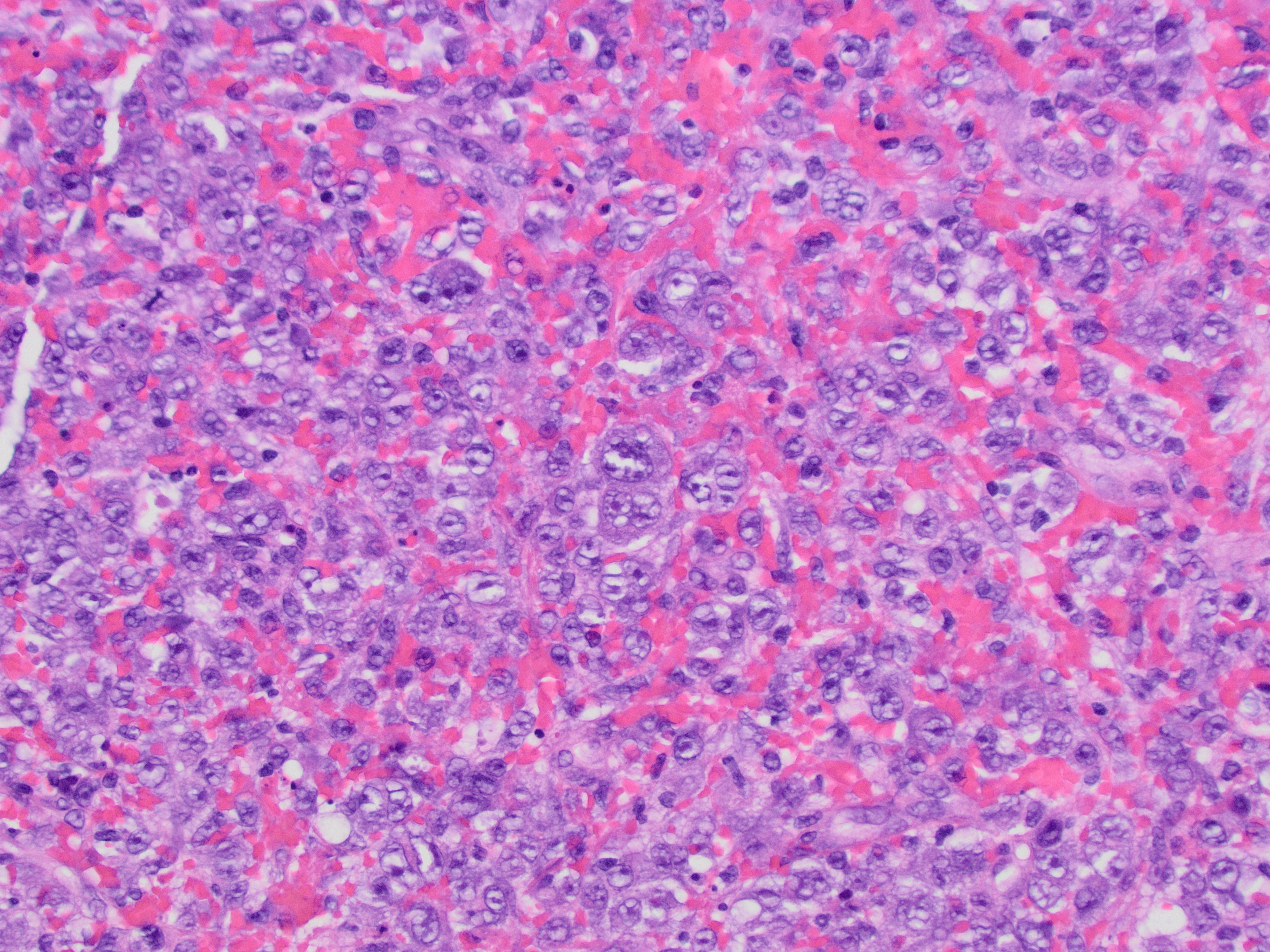
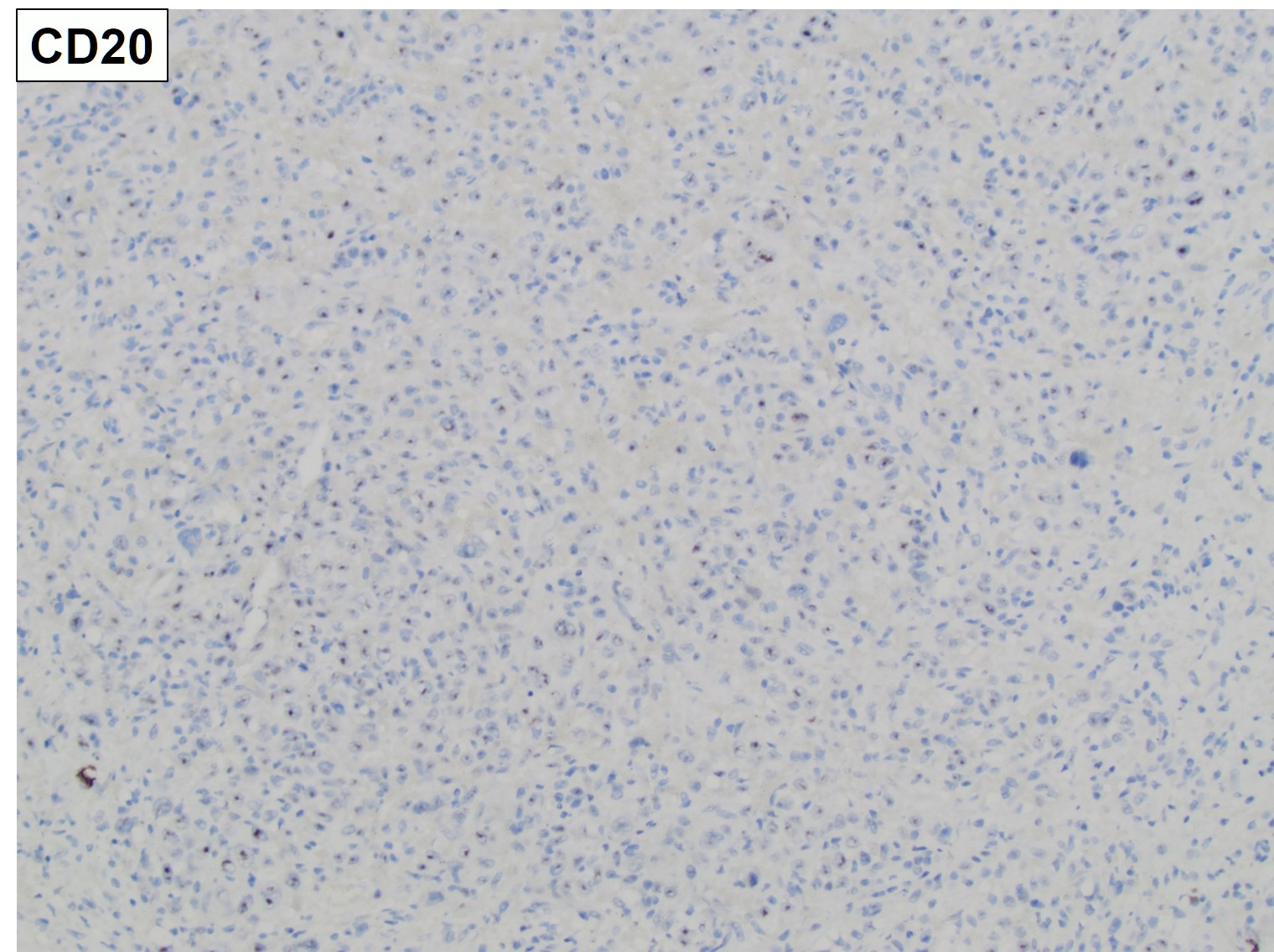
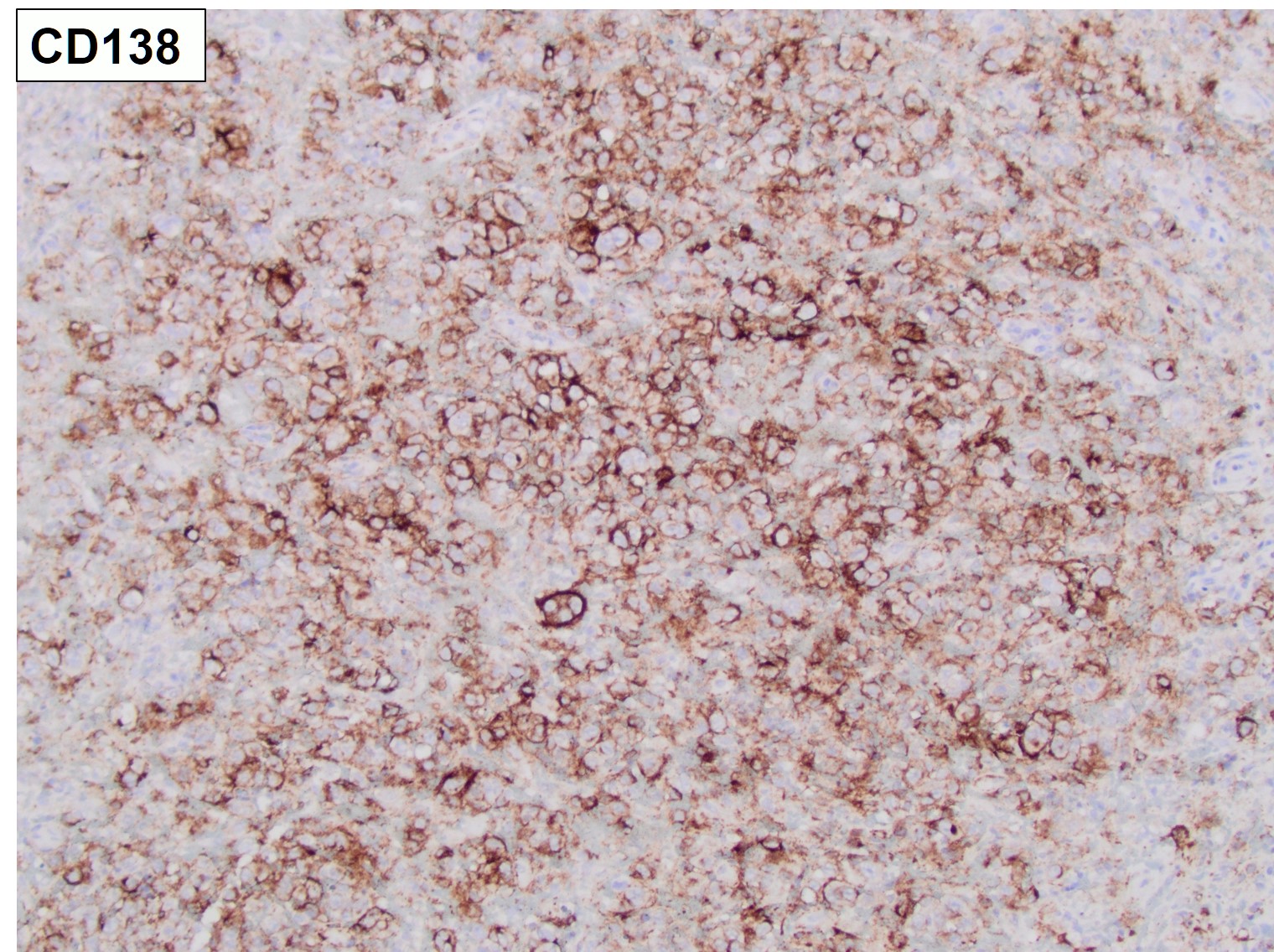
Answer: C. Perform additional IHC/ISH
The histologic sections demonstrate a plasmablastic neoplasm. Complete workup includes staining for EBER, which was negative in this case. Further the patient did not have a history of plasma cell myeloma, and concurrent bone marrow biopsy was negative. An additional immunostain is necessary to finish the workup at this point: ALK. Positive staining confirmed a diagnosis of ALK-positive large B-cell lymphoma.
The last step is ALK immunostains, which was positive, for a diagnosis of ALK-positive large B-cell lymphoma. ALK-positive large B-cell lymphoma is a rare aggressive, CD20-negative B-cell lymphoma. It displays a plasmablastic morphology/phenotype and part of a differential that includes primary effusion lymphoma, plasmablastic lymphoma, and plasma cell myeloma with plasmablastic morphology. Hsi et al. (2011) described an algorithmic approach to plasmablastic neoplasms in the accompanied figure. Sinusoidal growth, which is characteristic for the lymphoma, was seen in this case.
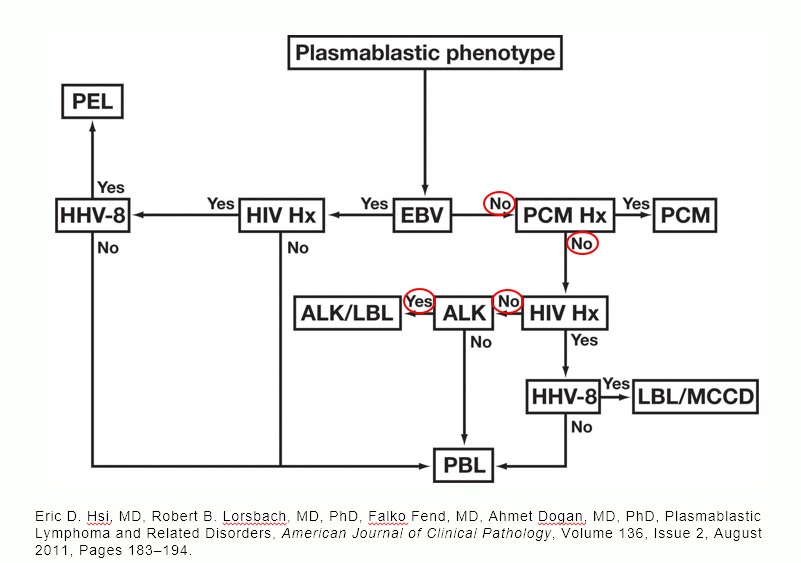
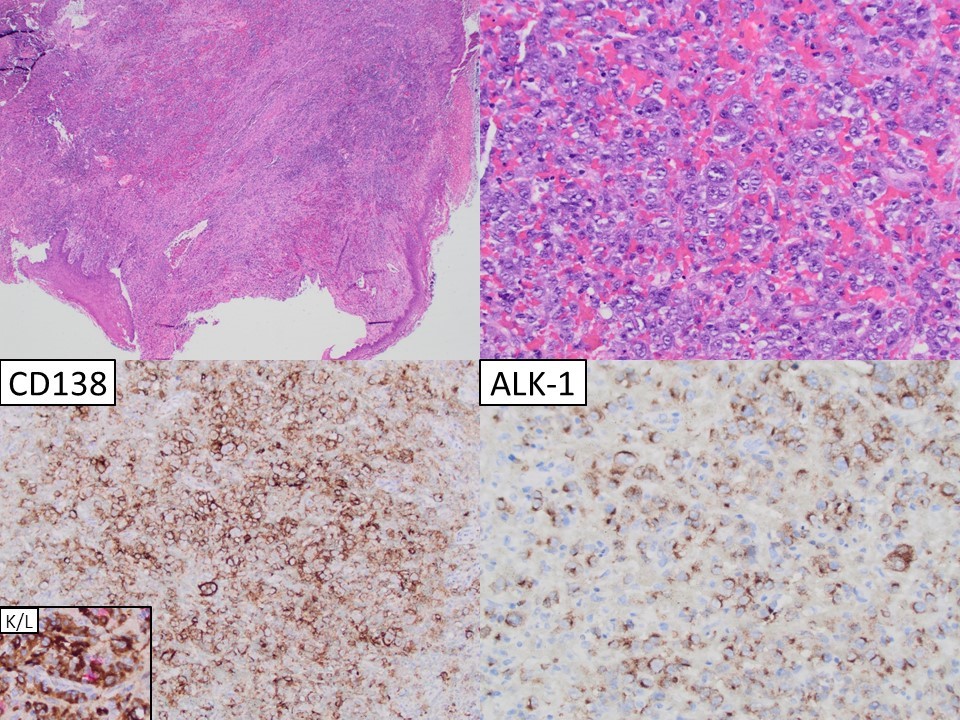
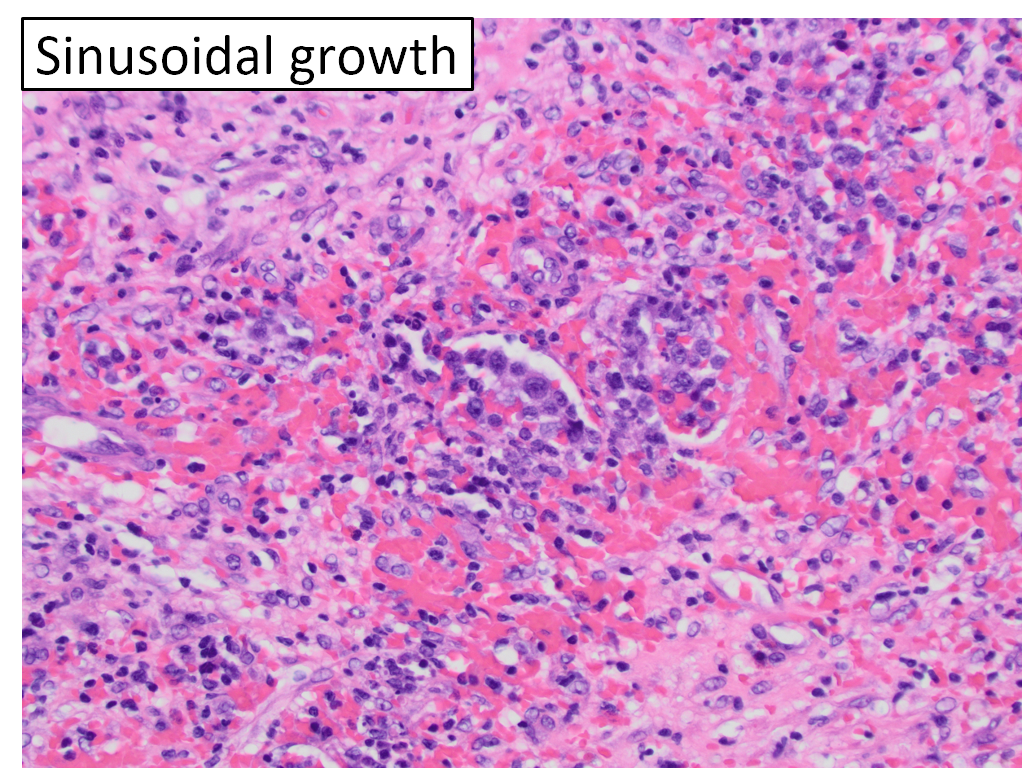
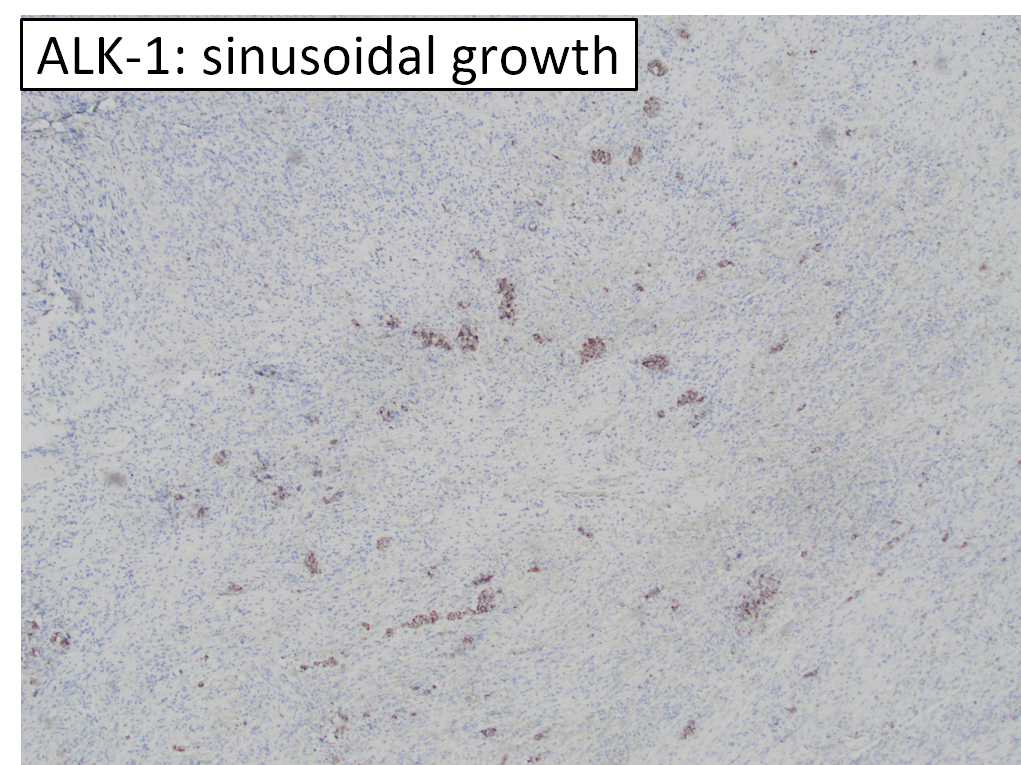
Case contributed by: Adam Wilberger, M.D., Assistant Professor, Laboratory Medicine